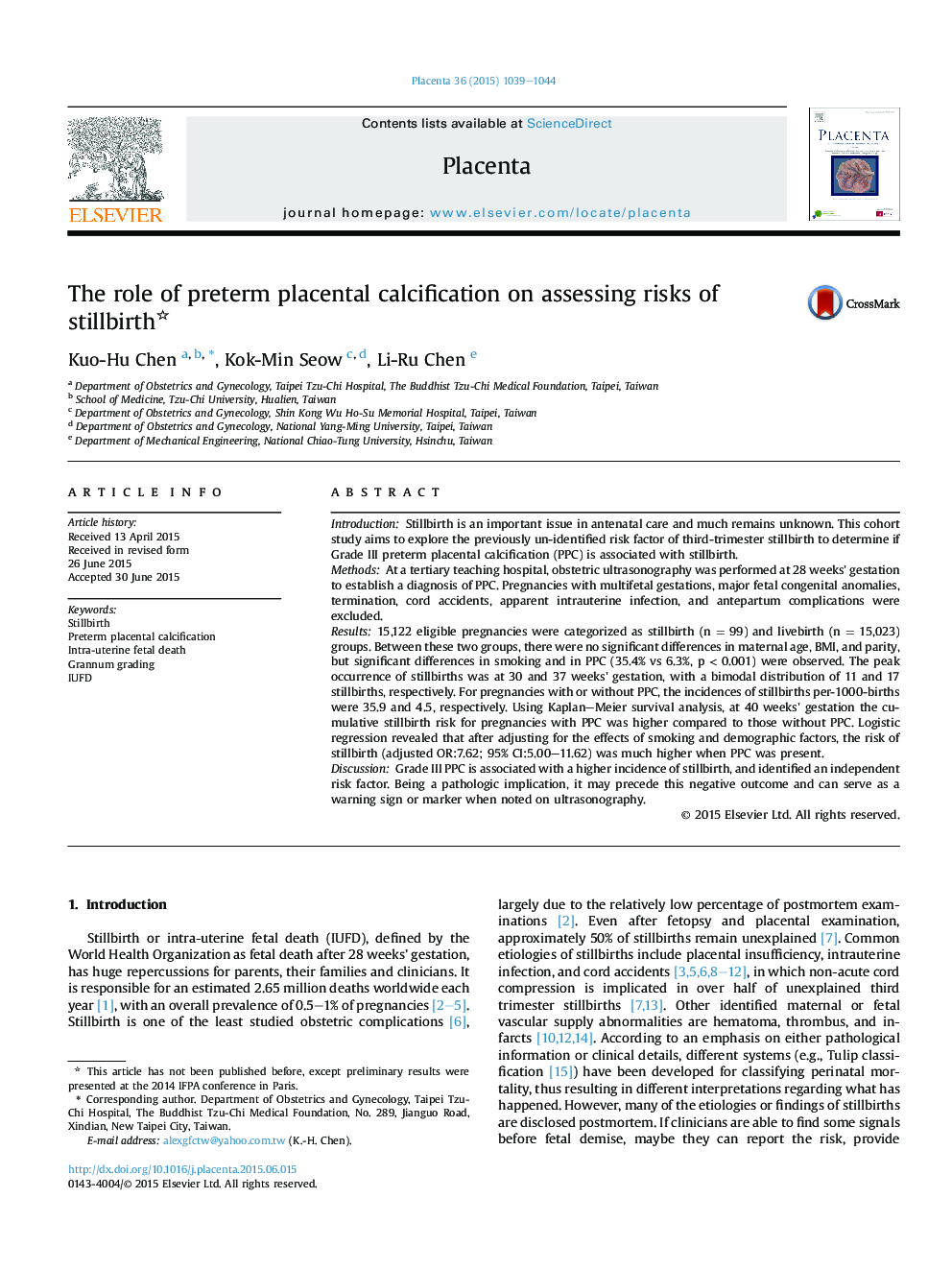| Article ID | Journal | Published Year | Pages | File Type |
|---|---|---|---|---|
| 2788551 | Placenta | 2015 | 6 Pages |
•Preterm placental calcification (PPC) is an independent risk factor of stillbirth.•PPC can serve as a warning sign or marker when noted on ultrasonography.•Appropriate information should be provided to facilitate earlier intervention.
IntroductionStillbirth is an important issue in antenatal care and much remains unknown. This cohort study aims to explore the previously un-identified risk factor of third-trimester stillbirth to determine if Grade III preterm placental calcification (PPC) is associated with stillbirth.MethodsAt a tertiary teaching hospital, obstetric ultrasonography was performed at 28 weeks' gestation to establish a diagnosis of PPC. Pregnancies with multifetal gestations, major fetal congenital anomalies, termination, cord accidents, apparent intrauterine infection, and antepartum complications were excluded.Results15,122 eligible pregnancies were categorized as stillbirth (n = 99) and livebirth (n = 15,023) groups. Between these two groups, there were no significant differences in maternal age, BMI, and parity, but significant differences in smoking and in PPC (35.4% vs 6.3%, p < 0.001) were observed. The peak occurrence of stillbirths was at 30 and 37 weeks' gestation, with a bimodal distribution of 11 and 17 stillbirths, respectively. For pregnancies with or without PPC, the incidences of stillbirths per-1000-births were 35.9 and 4.5, respectively. Using Kaplan–Meier survival analysis, at 40 weeks' gestation the cumulative stillbirth risk for pregnancies with PPC was higher compared to those without PPC. Logistic regression revealed that after adjusting for the effects of smoking and demographic factors, the risk of stillbirth (adjusted OR:7.62; 95% CI:5.00–11.62) was much higher when PPC was present.DiscussionGrade III PPC is associated with a higher incidence of stillbirth, and identified an independent risk factor. Being a pathologic implication, it may precede this negative outcome and can serve as a warning sign or marker when noted on ultrasonography.
